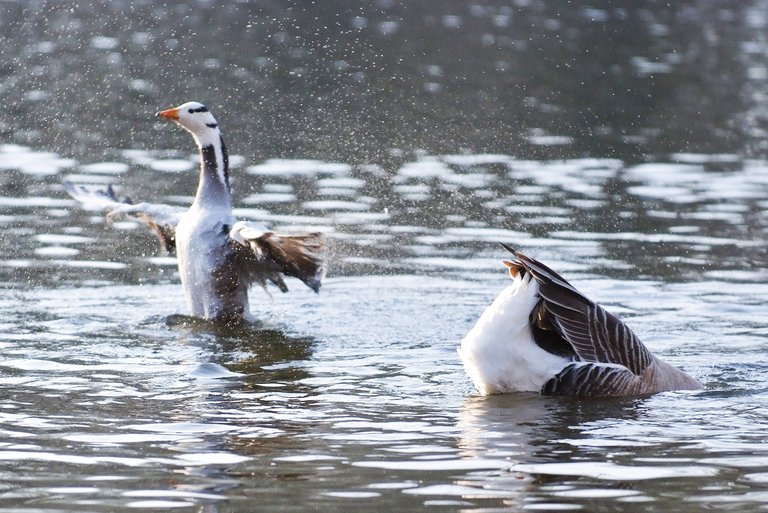Geese Indians Overcome the Himalayas Without the Wind

Migrate at night when there is no wind pushing it up
Contrary to what they believed, a group of international scientists have found that Indian geese travel overnight or early in the morning along the Himalayas, at a time when there is no rising wind. A team led by researchers from the University of Bangor in the UK has realized this in the first study conducted to study the flights of these birds.
The Indian Geese travel in spring from India to Mongolia and reverse in autumn. Both in one and the other, they have to cross the Himalaia mountain range, which in the spring journey has to climb up to 6,000 meters above sea level, while in the other sense have a lower margin of altitude to overcome, since the starting point is higher, on the plateau of Tibet.
Some researchers have described in recent years the adaptations these birds have had to make this effort, such as having lungs proportionally larger than any other bird, which get better oxygen to the muscles and heart and that hemoglobin carries more oxygen. However, it was considered essential to take advantage of the rising wind that is usually during the day in the Himalayas to facilitate the ascent.
To clarify this issue, 25 geese devices were added to send satellite data, in India, before migrating north, and 38 from Mongolia, before leaving south. In this way it was possible to track the location, altitude and speed of birds. It has been proven that these animals take between 7 and 8 hours to travel the 6,000 meters of mountain from sea level, and that they circulate at an average speed of 64.5 kilometers per hour. Researchers have also seen that flying south takes up to 4.5 hours.
In addition to getting speed data, they have seen geese travel when there is no rising wind. They believe that night and dawn temperatures can contribute to greater body waste and greater availability of oxygen, which may be more favorable for birds than the wind push.
Buletina
Bidali zure helbide elektronikoa eta jaso asteroko buletina zure sarrera-ontzian











